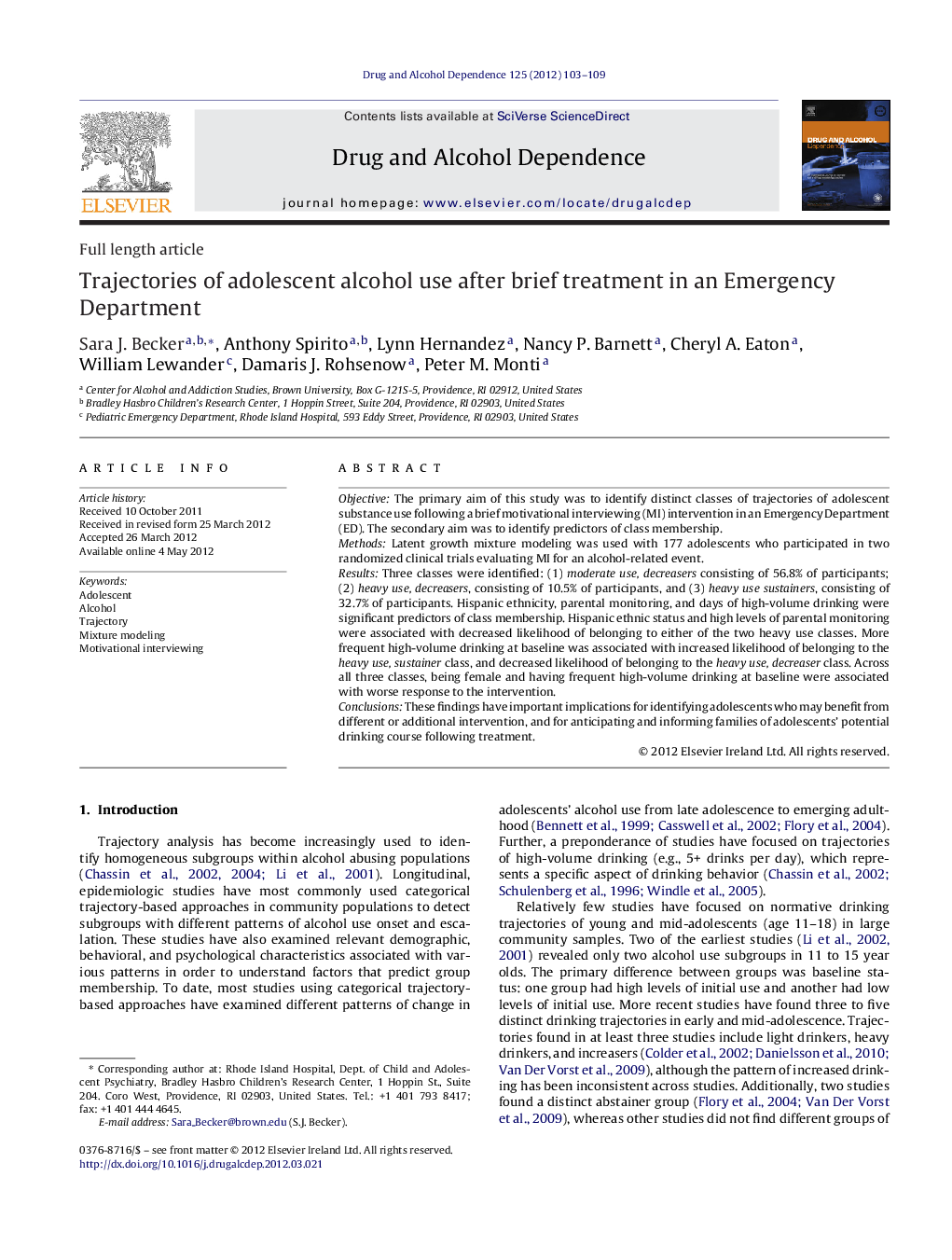| Article ID | Journal | Published Year | Pages | File Type |
|---|---|---|---|---|
| 1070087 | Drug and Alcohol Dependence | 2012 | 7 Pages |
ObjectiveThe primary aim of this study was to identify distinct classes of trajectories of adolescent substance use following a brief motivational interviewing (MI) intervention in an Emergency Department (ED). The secondary aim was to identify predictors of class membership.MethodsLatent growth mixture modeling was used with 177 adolescents who participated in two randomized clinical trials evaluating MI for an alcohol-related event.ResultsThree classes were identified: (1) moderate use, decreasers consisting of 56.8% of participants; (2) heavy use, decreasers, consisting of 10.5% of participants, and (3) heavy use sustainers, consisting of 32.7% of participants. Hispanic ethnicity, parental monitoring, and days of high-volume drinking were significant predictors of class membership. Hispanic ethnic status and high levels of parental monitoring were associated with decreased likelihood of belonging to either of the two heavy use classes. More frequent high-volume drinking at baseline was associated with increased likelihood of belonging to the heavy use, sustainer class, and decreased likelihood of belonging to the heavy use, decreaser class. Across all three classes, being female and having frequent high-volume drinking at baseline were associated with worse response to the intervention.ConclusionsThese findings have important implications for identifying adolescents who may benefit from different or additional intervention, and for anticipating and informing families of adolescents’ potential drinking course following treatment.
